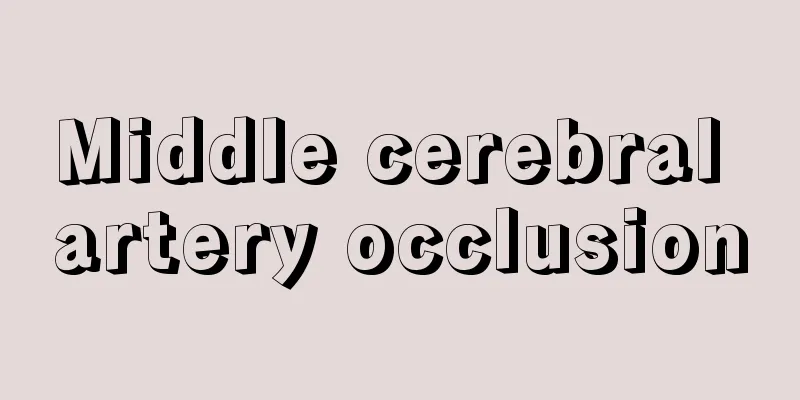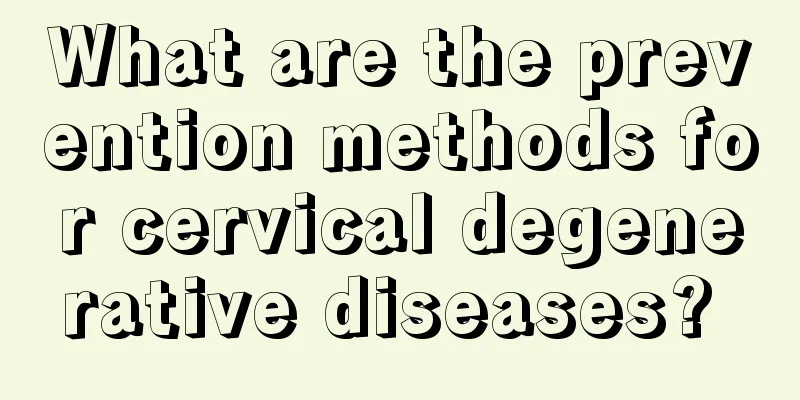Middle cerebral artery occlusion

|
Middle cerebral artery occlusion is middle cerebral artery occlusive syndrome, which is an internal medicine disease. Many hemiplegia, hemisensory disorders and hemianopsia are related to this disease because of arterial occlusion caused by blood clots. Although there are many ways to treat middle cerebral artery occlusion, the condition is very complicated. We need to know the general treatment situation and treat this disease reasonably. Below are some treatments for middle cerebral artery occlusion. Principles of acute treatment (1) Ultra-early treatment: First, citizens should be made aware of the emergency and first aid of stroke, understand the importance and necessity of ultra-early treatment, seek medical treatment immediately after the onset of the disease, and strive to dissolve the thrombus within the 3-6 hour treatment time window, reduce brain metabolism, control brain edema, protect brain cells, and save the ischemic penumbra; (2) Individualized treatment: taking the most appropriate history based on the patient's age, ischemic stroke type, severity of illness, and underlying diseases; (3) Prevention and treatment of complications such as infection, cerebrocardiac syndrome, hypothalamic injury, post-stroke anxiety or depression, syndrome of inappropriate antidiuretic hormone secretion, and multiple organ failure; (4) Holistic treatment: supportive therapy, symptomatic treatment and early rehabilitation treatment. Timely preventive interventions should be taken for stroke risk factors such as hypertension, diabetes and heart disease to reduce recurrence rates and lower disability rates. Treatment (1) Symptomatic treatment: including maintaining vital functions and dealing with complications. 1) Elevated blood pressure after ischemic stroke usually does not require emergency treatment. When 24/48 systolic blood pressure > 220 mmHg, diastolic blood pressure > 120 mmHg or mean arterial pressure > 130 mmHg, antihypertensive drugs can be used, such as captopril 6.25-12.5 mg sublingually. Avoid excessive blood pressure reduction, which may reduce cerebral pressure and aggravate cerebral ischemia. If blood pressure is too high (diastolic blood pressure > 140 mmHg), sodium nitroprusside 0.5-10 μg/kg.min can be used to maintain blood pressure at 170-180/95-100 mmHg. 2) Patients with impaired consciousness and respiratory tract infection should use appropriate antibiotics to control infection, maintain normal respiratory tract, inhale oxygen, prevent and treat pneumonia, and prevent urinary tract infection and bedsores. 3) The peak period of brain edema is 48h-5d after onset. Based on clinical observation or intracranial pressure detection, 20% mannitol 250ml can be used for intravenous drip once every 6-8h; or furosemide 40mg can be injected intravenously twice a day; 10% albumin 50ml can be injected intravenously. Excessive use of dehydrating agents and prolonged use are prone to serious adverse reactions, such as kidney damage and water and electricity disorder. 4) Bedridden patients can be given low molecular weight heparin 4000 IU subcutaneously, 1/2 time/day, to prevent pulmonary embolism and deep vein thrombosis; 5) Perform ECG monitoring within 3 days of onset to prevent fatal arrhythmias (ventricular tachycardia and ventricular fibrillation, etc.) and sudden death. Calcium antagonists and β-blockers can be given if necessary. 6) Blood sugar level should be controlled at 6-9mmol/L. Both high and low blood sugar levels will aggravate ischemic brain damage. If it is >10mmol/L, insulin treatment should be given and attention should be paid to maintaining water and electrolyte balance. 7) Control epileptic seizures promptly and treat patients’ post-stroke depression or anxiety disorders. (2) Ultra-early thrombolytic therapy: restore blood perfusion in the infarcted area, reduce neuronal damage, and save the ischemic penumbra. 1) Intravenous thrombolytic therapy: Commonly used thrombolytic drugs include: ① Urokinase (UK): 500,000-1.5 million IU added to 100 ml of 0.9% saline and intravenously dripped within 1 hour; ② Recombinant tissue plasminogen activator (rt-PA): single dose 0.9 mg/kg; % of the dose is given as an intravenous push first, and the rest is given as a continuous intravenous drip over about 60 minutes; rt-PA is a serine protease located on human chromosome 8 (8p12), which can catalyze lysozyme into plasmin and has the ability to dissolve fibrin clots contained in cerebral thrombi; some clinical control studies have shown that intravenous injection of rt-PA within 3 hours of symptom onset can reduce the morbidity and mortality of ischemic stroke, but its high price limits its application. Anticoagulants and antiplatelet drugs should not be used within the first 24 hours after using rt-PA. If CT shows no bleeding after 24 hours, anticoagulant and antiplatelet treatment can be used. Stroke patients receiving UK and rt-PA thrombolytic therapy must be treated in hospitals with the ability to diagnose stroke and deal with bleeding complications. The use of streptokinase (SK) for intravenous thrombolysis is not recommended as it may cause bleeding. If severe headache, vomiting, and sudden increase in bleeding occur during the menstrual period, UK or rt-PA should be discontinued immediately and a CT scan should be performed. Indications for thrombolysis: ①Acute ischemic stroke without coma. ② Within 3 hours of onset, which can be extended to 6 hours under the guidance of MRI; ③ Age ≥ 18 years old; ④ CT does not show low-density lesions and intracranial hemorrhage has been ruled out; ⑤ Consent from the patient and family members. Absolute contraindications: ① Single TIA or rapidly improving stroke and mild symptoms; ② Medical history and physical examination are consistent with subarachnoid hemorrhage; ③ Bp still >185/110Hg after two antihypertensive treatments; ④ CT examination reveals hemorrhage, cerebral edema, mass effect, tumor and arteriovenous malformation; ⑤ Patients have undergone major surgery or trauma within 14 days, arterial puncture within 7 days, active internal bleeding, etc.; ⑥ Patients are currently taking anticoagulants or have been treated with heparin 48 hours before stroke; ⑦ Medical history of blood diseases, bleeding diathesis, coagulation disorders or use of anticoagulant drugs (PT>15s, APTT>40s, INR>1.4, platelet count>100/109/L). Complications of thrombolysis: ① Secondary bleeding of infarct foci: UK is a non-selective fibrinolytic agent, which activates thrombus and plasma plasminogen, and has a potential risk of inducing bleeding. The coagulation time and prothrombin time should be tested after medication; ② Thrombolysis can also lead to fatal reperfusion injury and cerebral edema; ③ The re-occlusion rate of thrombolysis is as high as 10%-20%, and the mechanism is unclear. 2) Arterial thrombolysis - As an emergency treatment for stroke, super-selective interventional arterial thrombolysis can be performed under direct DSA vision. Urokinase arterial thrombolysis combined with low-dose heparin intravenous infusion may be beneficial for patients with stroke in the middle cerebral artery distribution area who have symptoms for 3-6 hours. (3) Brain protection therapy: A variety of brain protective agents are recommended for use. When used before the initiation of the ischemic cascade, they can reduce ischemic brain damage by reducing brain metabolism and intervening in the cytotoxic mechanism induced by ischemia. Including free radical scavengers (superoxide dismutase, barbiturates, vitamin E and vitamin C, 21-aminosteroids, etc.), as well as opioid receptor blockers naloxone, voltage-gated calcium channel blockers, excitatory amino acid receptor blockers and metronidazole ions. Currently, early (<2h) application of head or whole-body hypothermia treatment is recommended. Drugs can include citicoline, the new free radical scavenger edaravone, early (<4h) 10% protein albumin, cyclophosphamide and colchicine combined. However, many brain protective agents are effective in animal experiments, but have poor or ineffective clinical efficacy, and sufficient evidence is still needed. (4) Anticoagulant therapy: It has not been shown to be effective in most cases of complete stroke and does not seem to affect the course of an already occurring stroke. It can be used in a short term to prevent thrombus expansion, progressive stroke, and re-occlusion after thrombolytic therapy. Commonly used drugs include heparin, low molecular weight heparin and warfarin. During treatment, the coagulation time and prothrombin time should be tested, and inhibitors such as vitamin K and protamine sulfate should be available to deal with possible bleeding complications. (5) Fibrinolytic therapy: inhibiting thrombosis by degrading fibrinogen and enhancing the activity of the fibrinolytic system. The available drugs include batroxobin, defibrase, ancrod and lumbrokinase. The first dose of batroxobin is 1.BU, followed by 5BU every other day, injected intravenously for a total of 3-4 times, with good safety. (6) Antiplatelet therapy: Large-scale, multicenter randomized controlled clinical trials have shown that the use of aspirin 100-300 mg/d within 48 hours of onset in unselected patients with acute cerebral infarction can reduce mortality and recurrence rates. This is recommended. However, thrombolytic or anticoagulant therapy should not be used simultaneously as it may increase the risk of bleeding. Antiplatelet agents such as ticlopidine and clopidogrel can also be used. (7) Hospitals with the necessary conditions should set up stroke units. SUs should be staffed by multidisciplinary physicians, nurses, and therapists who have undergone professional training and should organically integrate emergency treatment, treatment, nursing, and rehabilitation of stroke so that patients can receive timely and standardized diagnosis and treatment, effectively reduce mortality and disability rates, improve patient prognosis, enhance quality of life, shorten hospital stays, reduce costs, and facilitate post-discharge management and community treatment. Patients with moderate to severe stroke, such as large-area cerebral infarction, cerebellar infarction, vertebral basilar artery infarction, and unstable cerebral infarction should be admitted to SU for treatment. (8) Vasodilators should not be used or should be used with caution during the acute phase of cerebral infarction, because the blood vessels in the ischemic area are paralyzed and overperfused, which may lead to brain blood steal and aggravate cerebral edema. Brain cell nutrients such as cerebrolysin should not be used in the acute phase of stroke, as they can increase oxygen consumption in ischemic and hypoxic brain cells and aggravate brain cell damage. They should be used in the subacute phase of stroke (2-4 weeks). Traditional Chinese medicine preparations, such as ginkgo preparations, chuanxiongqin, Panax notoginseng, Pueraria root, Salvia miltiorrhiza and hirudin, all have the effect of promoting blood circulation and removing blood stasis. Large-scale, multi-center, randomized controlled clinical trials and meta-analyses should be conducted to provide effective and strong evidence. (9) Surgical treatment: For patients with large supratentorial cerebral infarction with severe cerebral edema, mass effect and signs of brain herniation, decompressive craniotomy can be performed. For patients whose condition worsens due to cerebellar infarction that compresses the brainstem, aspiration of the infarcted cerebellar tissue and posterior cranial fossa decompression can save their lives. (10) Rehabilitation treatment: It should be carried out at an early stage and follow the principle of individualization. Short-term and long-term treatment plans should be formulated. Treatment methods should be selected in stages and according to local conditions. Targeted physical and skill training should be provided to patients to reduce the disability rate, enhance neurological function recovery, improve quality of life and enable them to return to society. (11) Preventive treatment: Patients with clear risk factors for ischemic stroke, such as hypertension, diabetes, atrial fibrillation, and carotid artery stenosis, should receive preventive treatment as early as possible. Antiplatelet drugs such as aspirin 50-100 mg/d and ticlopidine 250 mg/d have a definite effect on the secondary prevention of stroke and are recommended. Long-term use of the drug should be intermittent and should be used with caution in patients with bleeding tendencies. |
>>: Can I drink ginger water if my gums are inflamed?
Recommend
What are the consequences of not treating scabies?
Scabies is a very serious skin inflammation cause...
Is microwave ablation effective for a 73-year-old with peripheral lung cancer?
If a 73-year-old patient has peripheral lung canc...
Dietary adjustment after minimally invasive surgery for kidney stones
Minimally invasive surgery for kidney stones is n...
Which month is the best to renovate a house
Buying a house should be the most important thing...
Average life expectancy of women with thyroid cancer
After women are diagnosed with thyroid cancer, th...
There is a horizontal line on the nail
People attach great importance to their physical ...
What to do if your skin is keratinized?
Skin keratosis is also known as chicken skin. Chi...
What kind of tea can be soaked with Astragalus
Astragalus is a very common Chinese medicinal mat...
The most effective way to grow eyelashes
The differences in a person's facial features...
What plants absorb formaldehyde
After the decoration of a new home is completed, ...
What are some tips for itchy palate
Itchy palate is a common problem for many people....
Do I have to chew the chewable tablets before eating
Whether it is the elderly or children, the body&#...
What to do if you vomit blood in the late stage of gastric cancer? Timely treatment
In the late stage of gastric cancer, bleeding is ...
What's wrong with chicken skin on the buttocks
The skin on the buttocks is the most tender part....
Dietary arrangements for nasopharyngeal carcinoma patients during treatment
In recent years, more and more people have been t...









